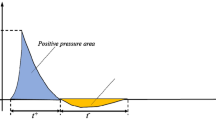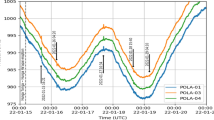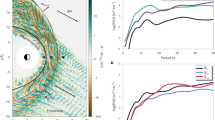Abstract
SINCE the American nuclear explosion on July 9, 1962, at Johnston Island, independent reports from different parts of the world1–5 have become available relating to the time of onset of some of its magnetic and earth-current effects. Apparently, in some places, the first impetus of the signal, almost instantaneously with the detonation, has not been noticed for some reason or other. The more intense impulse registered after 2 sec after zero time has been, perhaps, thought to be the first. At some other places, no mention is made of anything other than that received almost simultaneously with the blast. This note is to point out a substantial possibility of a hydromagnetic shock propagation due to the blast giving rise to almost simultaneous signal at different parts of the globe. Both the impulses, one at zero time, and the other 2 sec later, are treated from this point of view. It is, incidentally, pointed out that some of the auroral luminosity reported on this occasion might be attributed to the interaction of shock waves with the magnetosphere.
This is a preview of subscription content, access via your institution
Access options
Subscribe to this journal
Receive 51 print issues and online access
$199.00 per year
only $3.90 per issue
Buy this article
- Purchase on Springer Link
- Instant access to full article PDF
Prices may be subject to local taxes which are calculated during checkout
Similar content being viewed by others
References
Crook, G. M., et al., J. Geophys. Res., 68, 178 (1963).
Roquet, J., et al., J. Geophys. Res., 68, 3731 (1963).
Caner, B., and Whitham, K., Canad. J. Phys., 40, 1846 (1962).
Gregory, J. B., Nature, 196, 508 (1962).
Greystone, P., Canad. J. Phys., 41, 1743 (1963).
Troitskaya, V. A., J. Geophys. Res., 66, 5 (1961).
Berthold, W. K., et al., J. Geophys. Res., 65, 2233 (1960).
Troitskaya, V. A., Izvest. Akad. Nauk U.S.S.R., Ser. Geophys., 9 (1960).
Field, E. C., J. Geophys. Res., 68, 1172 (1963).
Lundquist, S., Arkiv. Fysik, 5, 297 (1952).
Singer, S. F., Trans. A.G.U., 38, 175 (1957).
Johnson, F. S., J. Geophys. Res., 65, 3049 (1960).
Parker, E. N., Space Sci. Rev., 1, 62 (1962).
Bomke, H. A., et al., Nature, 185, 299 (1960).
Author information
Authors and Affiliations
Rights and permissions
About this article
Cite this article
IYENGAR, R. Shock Wave Propagation from a Nuclear Blast. Nature 203, 746–747 (1964). https://doi.org/10.1038/203746b0
Published:
Issue Date:
DOI: https://doi.org/10.1038/203746b0
Comments
By submitting a comment you agree to abide by our Terms and Community Guidelines. If you find something abusive or that does not comply with our terms or guidelines please flag it as inappropriate.



